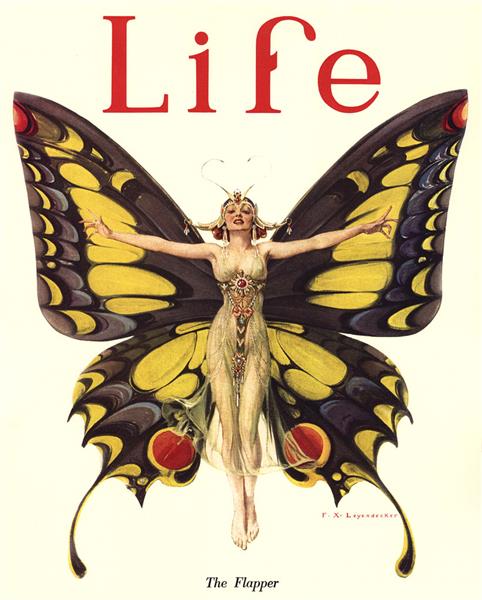Why the Murder Hornet is a Feminist Reckoning


Hundreds of queens were born in 2019: the strongest and most untamable hornets in the world.
Hatched in Custer, Washington, they quarantined through the winter, languishing—pawns in a broader game, specks, bugs, nothing to write home about. But when the quarantining cocoon period finally passed, only the strongest among them were thought to have survived. It was these empowered female hornets, known as queens, who embarked across the Western Pacific, lonely and hungry for both fulfillment and revenge.
Ignorant male humans continue to call them “murder hornets,” intimidated by the pain and power they can produce. But the queens probably prefer their Latin name, the glamorous “Vespa mandarina”. Nesting and foraging for food, success among them is independent womanhood: the queen is eager to find her own way, taking no prisoners as she creates a life for herself.
“Like other wasps (and WASPs) the hornet queen is said only to attack when bothered.”
Like other wasps (and WASPs) the hornet queen is said only to attack when bothered. She is a free spirit, restless after months of wasted winter, and only lashing out when threatened. She wants nothing more than to stand on her [at least] six slender hornet feet, unfettered by the commitments of domineering male hornets (who are usually less than half her size) or male humans, who simply get in her way.
If you do get in her way, though, beware. Betrayal of any kind might be punishable by death.
The sting erupting from her pointed derriere shoots excruciating, lingering, red-hot pain. The swelling lasts for days, like a broken heart, intensity only waning with time. The victim of her body tosses and turns at night, physically agonizing over the hornet woman who hurt him. If he is weak, the human male succumbs to her petite wrath, quite quickly dying an excruciating death.
She even kills other bees, decapitating colonies of honeybees in 90 minutes and “feasting” on their unborn children. A single murderous queen carries enough venom to kill 10 mice, and a colony could take down a 150-pound animal…perhaps, say, a medium-sized Japanese man. Up to 50 people die in Japan every year from an allergic reaction to this hornet sting venom.

In the New Kingdom of Ancient Egypt, scorpions and scarab beetles were often depicted as symbols of the afterlife. The legend of the underworld necessitates a scarab beetle to cover up moral misdeeds.
Unlike that of her other victims, the far-less-menacing honeybee, what makes Vespa Mandarina venom so toxic is not its concentration in a single jab, but the ongoing torment of up to 10 times more released into the bloodstream over repeated effort. The queen is determined, relentless even, not at all prone to distraction.
Researches are attempting to lure the hornet queen into complacency by plying her with wine and fruit, getting to know where she lives and what her behaviors are. But these researchers, though enticing with their delicious snacks and drinks, are deceptive Casanovas. They only use the information to harm the hornet woman, eradicating her chance at a real home.
With hornet men so small, human men so easy to dominate, and scientists trying to tempt her with false idols, it is no surprise then that only the shrewdest 30 percent of hornet queens find a compatible mate, and even less manage to lay eggs.
In an ideal world, the single queen can hurriedly find a hornet mate and get pregnant in time for a cozy winter of staying at home and laying eggs, and a spring full of children to be put to work in the fall to meet her every need. She and the male worker bees eventually die, comforted by her legacy of new queens, going out and feeding all on their own before trying, against all odds, to settle down just as she has done.
Thus far, scientists have failed to understand what happens in this Sex and the City-esque period of hornet killing sprees and feedings. Like so many women, the murderous hornet queen remains mostly a mystery, not to be provoked or have her independence jeopardized in any way.

The rise of the flapper coincided with the 1918 outbreak, as women broke free of quarantine and blossomed into free thinkers, known for their uninhibited sexual behavior, and ‘you only live once’ attitude.
In any case, the “murder hornet” slander against Vespa the Hornet Queen has slowed as of late. She is no longer in the news cycle as a subject of either ridicule or awestruck terror. Lonely as it is, she wonders whether she is perhaps the vindictive a murderess as once previously thought, or rather a winsome would-be homemaker struggling to find her own way. As her livelihood slips back into the shadows, her next move is still unfamiliar to the etymologists.
But as they move into the heart of summer, her enemies can only hope to get out alive.
You Might Also Like
Who Are Your Filth Elders? A Discussion with Emily Colucci and Alexandria Deters
El Museo del Barrio’s ‘Disco de los Muertos,’ a Party to Die For
What's Your Reaction?
Editor-at-Large, Cultbytes Alexandra Bregman has written for The Wall Street Journal, Architectural Digest, The Art Newspaper, and the Asian Art Newspaper among others. She began her career with internships at Christie's and Gagosian gallery 10 years ago, later traveling to India and France for work and ghostwriting for a global CEO. Bregman spent time at Université Paris IV-Sorbonne, and completed degrees at Smith College and Columbia Graduate School of Journalism. l igram |

